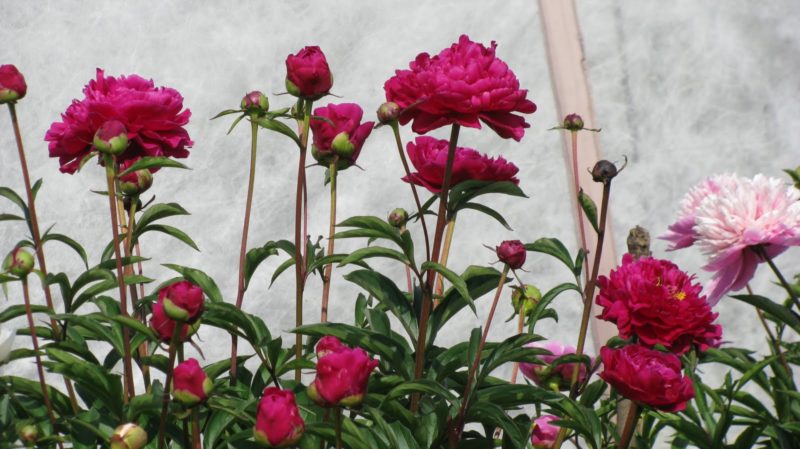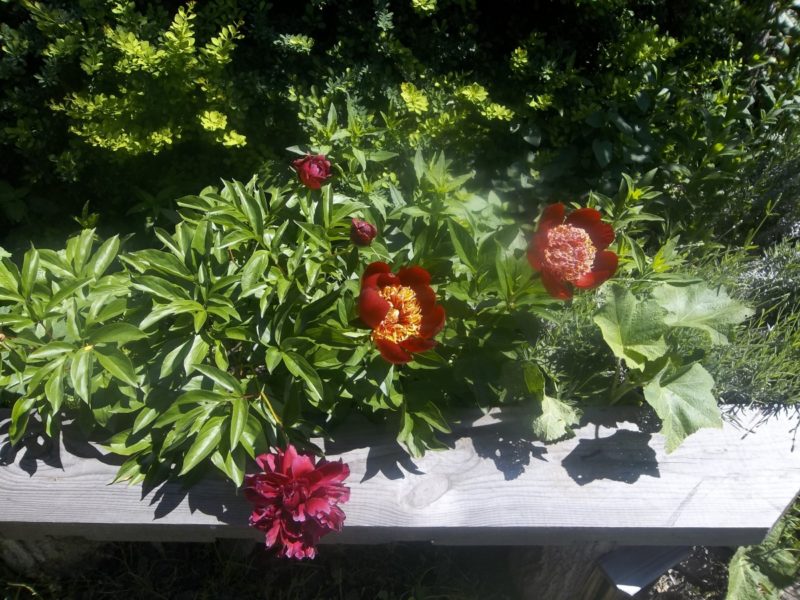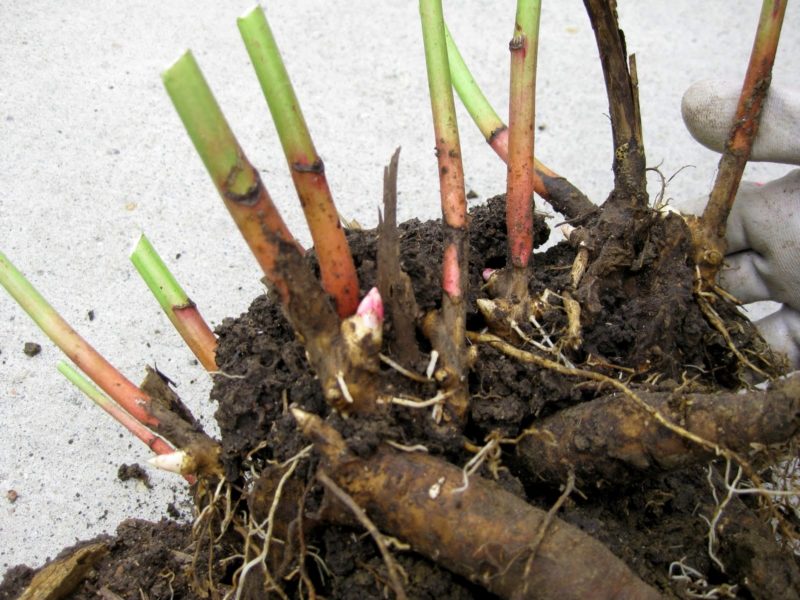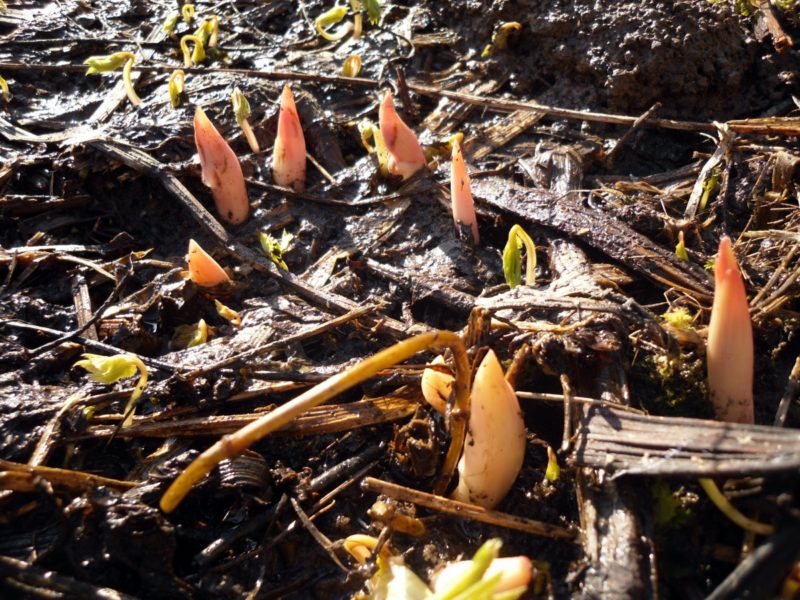Peony is a beautiful and long-lived perennial, with large fragrant flowers. If the grower does not know why peonies do not bloom, what to do in this situation, then it is useful to consider all possible causes. These may be planting errors, improper care or lack of nutrients.
Material Content:
Why peonies do not bloom - a natural reason
New leaves grow, but no buds, or they crumble without blooming. This situation should not be surprising in the first year of planting. There is a simple and natural explanation - the biological characteristics of the plant. There is an accumulation of nutrients, the formation of the root system.

Some varieties of peonies in the second year after planting bloom inferiorly. In the third year, flowers of a normal size should appear, but in some cultivars this process is postponed for another year. Underdeveloped buds must be removed. After a year or two, you can leave large ones, cut off small, side ones.
Sometimes the buds do not appear in the second and third years after transplantation. The fragile bush was exhausted, did not adapt to the conditions of a new place. Often, the lack of flowers is due to incorrect actions during planting and transplanting.
Reasons why the plant does not bloom
An unsuccessful landing site, improper deepening of a growth point are two of the most common mistakes. The conditions on the site do not correspond to the biology of the plant, but gardeners may not know about this, or do not attach importance.
Wrong place choice
Peonies come from subtropical regions where sunny weather prevails and there is enough moisture throughout the year.The area on which the plants are planted may be too shady or dry for them.
Peonies prefer good lighting, open areas, but without drafts. With a lack of light, the number of buds is reduced or they do not appear at all.
Peonies are often planted too close to trees and shrubs, near walls and fences. Shading does not allow the development of a herbaceous plant, and the roots of larger species take water and nutrients from the soil. In such conditions, getting flowers is problematic. Neighborhood with trees is favorable when creating an openwork shade for herbaceous perennials, good watering and regular feeding.

Large-sized bushes form many leaves that constantly need moisture. Therefore, too dry or marshy soil on the site is not suitable. Stagnation of water near the roots contributes to the decay and spread of disease. The composition of the soil is also important - pions require a pH of at least 5.8 and no more than 7.
An interesting fact: peonies on heavy loams and chernozems bloom brighter and live longer. Bushes planted on light sandy soils bloom earlier, but quickly outlive their age.
Mistakes when planting a peony
Growth buds should be at a depth of 3-5 cm. When deviated in one direction or another, the plant does not bloom. Too close to the surface of the soil is dangerous for the peony - the kidneys freeze. Strong deepening of the growth point lengthens the period of shoot formation and causes the plant to spend the forces necessary for flowering.
Improper care
The appearance of a bud with its subsequent drying is a sign of mineral starvation. After top dressing, the peony will gain strength and bloom next year. "Feed" the bushes should not be. Excess nitrogen fertilizers stimulate abundant growth of leaves, buds do not appear or open poorly and dry out. Peonies are fed at certain times, best after flowering, when new buds are formed.

Mistakes with watering or prolonged rains cause a strong wetting of the buds. They do not bloom, soaked in water and become brown. Drought prevents the development of flowers and reduces the number of buds that give rise to shoots for next year.
The main mistakes in the propagation of peony
A spring transplant is undesirable because the plant will necessarily drop the buds. There are other violations of agricultural cultivation practices that negatively affect flowering. The division of the bush is carried out in late summer and early autumn. The pit for landing is made deep - at least 0.7 m.
The adult bush has a powerful root system that supplies the ground organs. However, the roots of old plants can rot. When the flowering intensity of an adult peony decreases, a bush is dug up and inspected. If there are healthy kidneys on the roots, they are divided into parts and transplanted to another site.

It is undesirable to grow peony in one place for too long. After transplantation, the young plant is allowed to grow stronger for 5-6 years.
The main errors in the propagation of peonies:
- Planting small or too large delenok
- Wrong timing
- Division of a bush under 5 years of age
- Planting delenok in place of the mother bush
When a peony is transplanted, delenki with 3-5 reddish shoots bloom faster. An economical option - a root with 1-2 buds - will only cause the flowering to begin later than after 2 years.
What to do if peonies do not grow?
The annual abundant flowering of peonies depends on good care. This does not mean that you need to spend the night and sleep in the garden. The less worried a peony is, the faster it accumulates nutrients and creates a microclimate in the depths of a powerful bush.
Care Tips
Peony should not be disturbed in the spring during the period of work on cleaning old leaves, garbage. By negligence, you can injure the buds and roots of the plant. Watering is carried out 3-4 times per season (taking into account the amount of atmospheric moisture).The soil is loosened, weeds are removed around the bush. If necessary, tie or install supports.
After flowering, the plant also needs care, as the shoots of the next year are laid.
In autumn, the leaves are pruned just before the frosts at a height of 10 cm above the soil. The land parts of the plant are not used for compost, so as not to spread fungal and bacterial diseases. Branches and leaves are burned or otherwise destroyed.
How to feed peonies to improve flowering
Supplementary nutrition is necessary for young and adult plants. Mineral and organic fertilizers are mixed with soil and added to the planting pit, so in the first two years the peony needs less nutrition. After three years of life, the plant needs top dressing for normal flowering.

Mineral Fertilizer Plan:
- In early spring, potassium-nitrogen fertilizer is scattered over the melting snow around the bush. They dissolve well and penetrate to awakened roots.
- During the budding period, a complex fertilizer, for example ammophoska, is applied under each bush.
- Two weeks after flowering, phosphate-potassium fertilizer is applied, the most important for laying new buds. You can feed phosphorus and potassium in the fall, the nutrient will gradually penetrate the soil.
Organic fertilizer for peonies
The plants are fed with slurry diluted with water. However, an excess of nitrogen in this organic fertilizer causes strong overgrowth of bushes. A folk remedy for replenishing the supply of nutrients is fermented rye bread. Half a loaf is cut and soaked in water for ½ days. It turns out a thick mass, which is bred in a bucket of water. Young sprouts that appeared in spring on the surface of the earth are watered with a solution. Such top dressing will favorably affect the flowering of peonies in the current and next year.
After correcting errors that delay flowering, peony bushes will begin to stably please with the magnificence of blooming buds for at least 10 years. This will require regular watering and prevention of the so-called care diseases.












